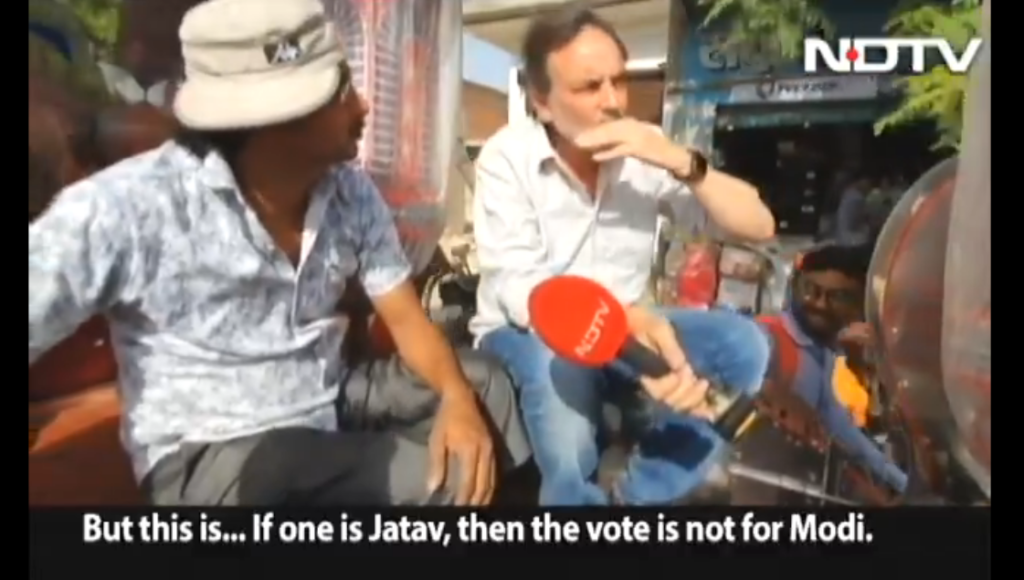The media in India has historically been dominated by a group of select elites born out of a perpetual quid prop quo with certain political forces. Be it print or electronic media, this select group of elites and their associates have been provided with free ground to push down propaganda in the garb of ‘journalism’. However the advent of social media transformed the media from a one way loudspeaker to a two way telephone providing the erstwhile receivers or listeners with the ability to respond and question.
The loss of monopoly over the media didn’t go down well with the elite groups who have now employed an improvised strategy to mold the truth and fit it into narratives driven by their political agendas. However in this game of the ‘elites’ to preserve political relevance, truth and the citizens have been the biggest victims.
The electronic space over recent years has been seeing a huge influx of ambiguous and confusing information. Some reports though highly misleading, succeed to impact the minds of readers. While convenient molding of facts to suit a certain agenda has been on continuous rise, scrutiny is essential in order to filter out genuine information from agenda driven narratives. The 2019 general election has also been witnessing a huge upsurge of journalistic pieces which fail to stand the test of truth on merit, however theses ‘pieces’ are sure helpful in exposing the underlying bias which masquerades as neutrality.
In one curious example of similar nature, NDTV’s Prannoy Roy toured the country covering 2019 elections. During almost every interaction with the people, the one common thing was people praising PM Modi’s work and his leadership, reaffirming their faith in him. However this enthusiasm which flowed through the electorate in support of Narendra Modi didn’t seem to go down well with Mr. Roy.
Mr. Roy’s biases are clearly evident with a video snippet posted on twitter:
NDTV Prannoy Roy is feeling utterly pissed off when he sees these youths in UP praising NaMo to the skies and they want NaMo to continue as PM as long as he is alive. 😆🤣👇👇👇 pic.twitter.com/taAHvBOqUh
— Dhruva Jain🇮🇳 (@Dhruva_Jain) May 14, 2019
In the video a young man is seen praising strong leadership of PM Modi, he says, “We need a person in the country who can speak fearlessly in public, the country runs because of a strong leader.”
However Mr. Roy was fast to term the youth praising PM Modi a strong leader as ‘worrying’. Prannoy’s comments take us back to the 10 year tenure of Manmohan Singh which was marred in controversies over the ‘real power’ residing with Congress matriarch Sonia Gandhi.
In another video Prannoy Roy is evidently seen putting in the caste angle in the support enjoyed by PM Modi.
This 56 seconds clip pictures the cleavage between the Khan Market intellectuals and the unwashed masses.
Prannoy Roy tries to school the voters that they must vote on caste lines, but gets schooled that vote is for development pic.twitter.com/FJC2cNvu5Q
— We, the people of India (@India_Policy) May 14, 2019
Prannoy Roy asks, “You meet a lot of people, who his ahead in this elections? “
To which an individual replies “Modi is ahead”
However Mr. Roy was fast to bring caste equations in the discourse, “But this is…if one is Jatav the vote will not go to Modi, if one is Yadav then it is not for Modi, if one is Brahmin then the vote is for Modi, so the entire thing is based on caste right?”
To which the individual, slamming blatant caste overtones replies, “It has nothing to do with caste only to do with work”.
Prannoy Roy took a diametrically opposite view, when he had said, during an interview, that 2019 is an election of Hindu polarization. He had said “factor that stands out the most is the level of polarization among Hindu voters”. While voters still attribute PM Modi’s popularity to the developmental work under his leadership, a few still would shift the basis on the theory of ‘Hindu polarization’.
Elections in India have been seeing similar trends with various journalists posing as experts coming out with their analysis of the political situation in India only to be proved wrong as the reality sets in mostly in form of election results. However it would be a bit unfair to call these meek attempts just biases, limited knowledge of relevant subjects might have also contributed to the same. Prannoy Roy’s ‘analysis’ only shows why political analysts get Indian elections wrong altogether and then are surprised by the results.
